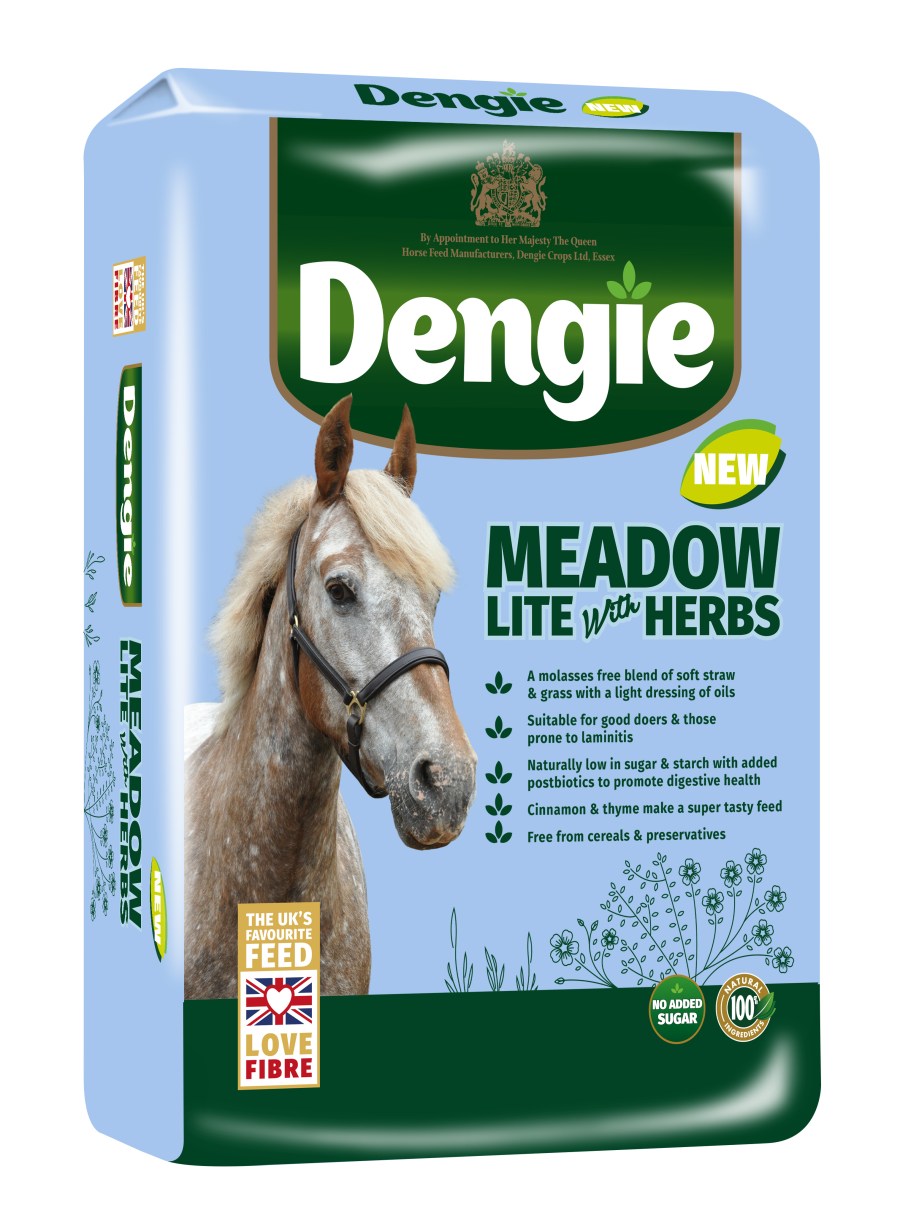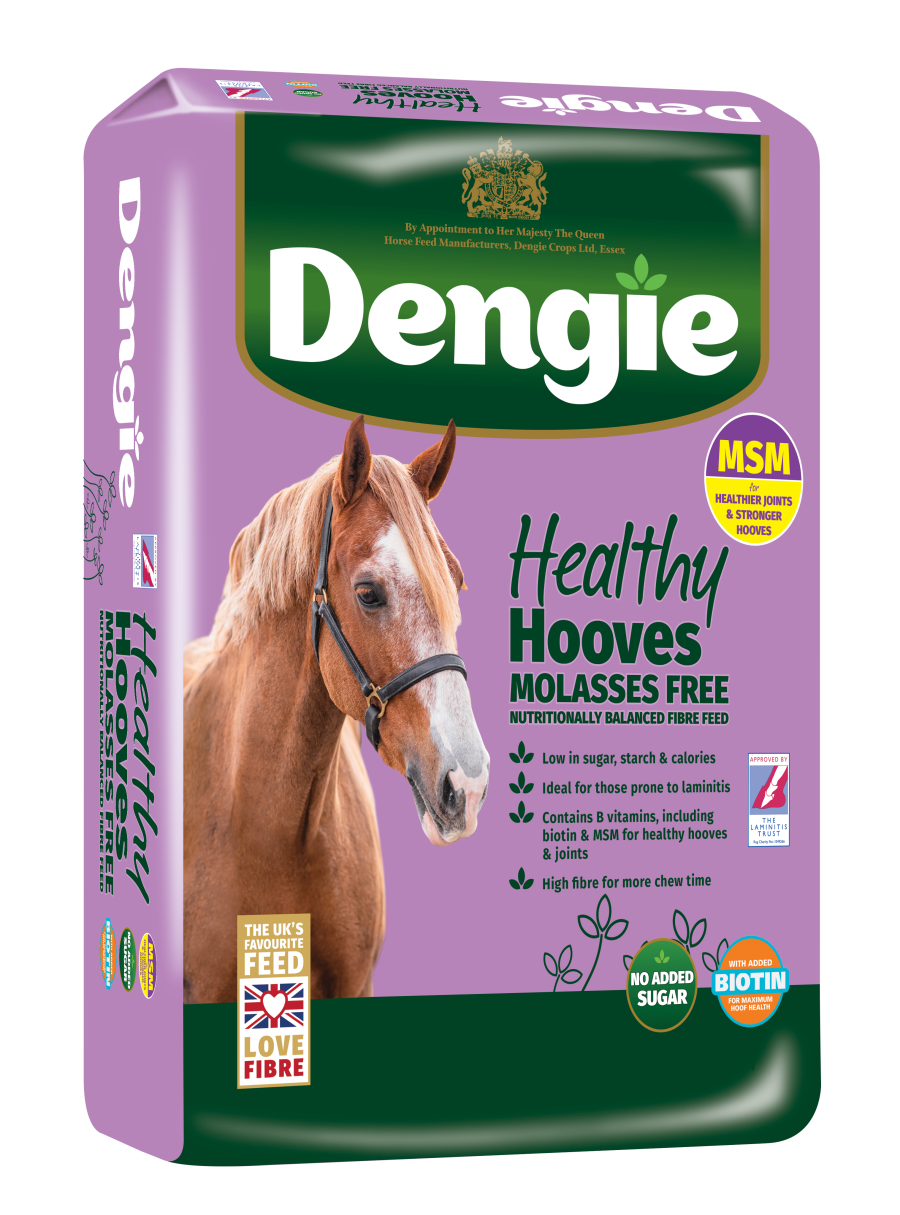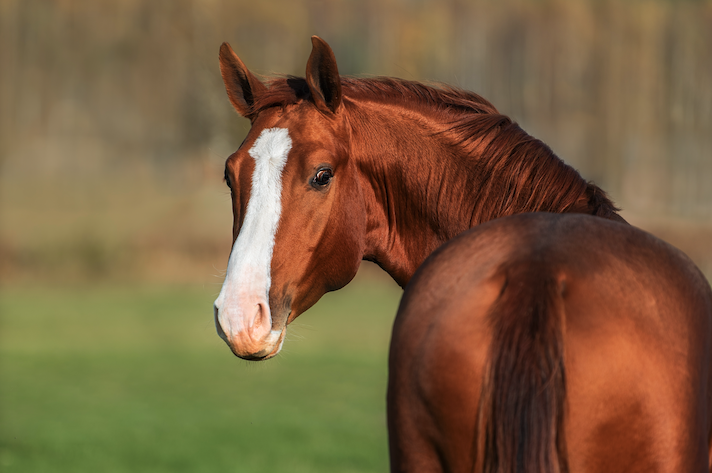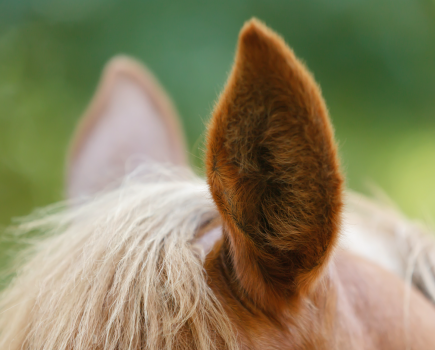Advertisement feature
Winter is upon us and it’s a notoriously difficult time of year for horse owners and riders questing to keep their charges in top health. Not only do we need to find time to ride, but it’s our job to keep them happy and healthy in less than ideal circumstances (less turnout, more stable time, freezing temperatures etc) as well.
This is why it is a good time to review your horse’s feeding plan and diet right now. There are three key areas to consider: your horse’s weight, the forage you feed, and whether their diet is balanced.
To help you nail all three, let’s look at them in more detail…
How’s your horse’s weight?
The first thing to assess when it comes to winter health is your horse’s body weight and level of fat cover.
If you are having to press much harder to feel your horse’s skeleton when fat scoring it is an indicator your horse is carrying excess weight and the focus over the coming months should be on weight loss.
Here is a short video about how to fat score your horse or pony:
Grass intake
If you routinely restrict your horse’s grass intake to help manage their weight during the summer, you may have started to relax their grazing management in autumn.
However, the cooler but mild and moist conditions in autumn after a drier summer can result in a seasonal flush of grass growth that can result in rapid weight gain.
An increase in the amount of grass available also means an increase in the intake of non-structural carbohydrates (NSC).
This is an analytical term for the sum of starch plus water-soluble carbohydrates (WSC), which is simple sugars plus fructans added together.
Those that are particularly prone to laminitis due to underlying insulin dysregulation may need moving to a no-grass area at this time of year to manage their intake of NSC and therefore laminitis risk, as well as their weight.
What forage have you got?
 Over the coming months, the reliance on conserved forages increases as your horse spends longer in the stable.
Over the coming months, the reliance on conserved forages increases as your horse spends longer in the stable.
One of the key challenges for good doers and those that are laminitis-prone who need to lose weight is feeding sufficient forage to maintain digestive and behavioural health whilst encouraging weight loss.
As a minimum, all horses and ponies should have access to 1.5% of their bodyweight of forage on a dry matter basis daily.
Whilst some dietary restrictions may be required to encourage weight loss, first and foremost we should focus on using the lowest calorie forage available to allow a greater quantity of forage to be fed.
Feeding plenty of forage is important for the health of your horse’s digestive system and for their general health and welfare.
Forage options
Haylage tends to be the most digestible and therefore most calorific option as the grass is cut at an earlier botanical age. Hay sits between haylage and straw in its digestibility and therefore calorie level.
One advantage of hay is that it can be soaked in water to encourage the loss of WSC further reducing its calorie level.
Here is a short video explaining the difference between hay and haylage:
Straw as forage
Straw is the lowest calorie option for horses as it is cut when the plant is mature and it also contains a larger amount of an indigestible type of fibre called lignin.
When using typical energy values for straw and average hay, replacing 50% of hay with straw can reduce energy intake by around 20%.
If straw replaces even higher energy value forages like haylage, the reduction in energy intake can be even greater.
Some people are reluctant to try straw in their forage ration as they have heard that it increases the risk of impaction colic and gastric ulcers.
Whilst we do need to be mindful of the colic risk, the biggest health threat may be from a sudden dietary change in winter, or from a horse that is unable to chew efficiently.
If you want to try straw as part of your horse’s forage ration the key advice is that your horse must have good dentition, and that straw must be introduced gradually to the feeding regime.
Research by Jansson et al (2021)* has shown that feeding up to 50% of the forage ration as straw is acceptable and doesn’t increase the risk of Equine Gastric Ulcer Syndrome (EGUS).
They also found in this study that the use of straw slowed the rate of eating so significantly that the insulinemic response was negligible.
This is particularly beneficial for those that are laminitis prone due to underlying insulin dysregulation further supporting the use of straw for laminitis and weight management.
Low calorie forage replacers
Here is a short video about feeding low calorie forage replacers:
 Whist using straw and soaking hay are very useful methods to aid weight control and help to manage laminitis risk, unfortunately there are times when they aren’t a practical option.
Whist using straw and soaking hay are very useful methods to aid weight control and help to manage laminitis risk, unfortunately there are times when they aren’t a practical option.
Lack of availability or poor hygienic quality of straw is common and freezing winter conditions make it impossible to soak your hay. This is where products like Dengie Meadow Lite with Herbs can be a more practical alternative.
Dengie Meadow Lite with Herbs
Dengie Meadow Lite with Herbs is our lowest calorie fibre feed at only 5MJ/kg Digestible Energy. It combines chopped straw and grasses with pea hull fibre, a rapeseed and linseed oil coating, cinnamon, thyme and postbiotics.
Meadow Lite with Herbs is low in sugar and starch at 3% and 0.5% respectively, making it suitable for those that are laminitis-prone and watching their weight.
Once gradually introduced to the feeding regime, it can be used as a total forage replacer if required. It is acceptable to leave a large amount of Meadow Lite with Herbs for your horse to munch on as and when, similar to how you would offer a net of forage.
Dividing Meadow Lite with Herbs up into multiple buckets can also help increase foraging time, as can the use of slow feeding devices like a Trickle Net Shake & Graze.
Are you providing a balanced diet?
 UK pasture and conserved forage commonly lack the trace minerals copper, selenium, and zinc as well as Vitamin E for conserved forage.
UK pasture and conserved forage commonly lack the trace minerals copper, selenium, and zinc as well as Vitamin E for conserved forage.
To this end, we look to add these nutrients to the horse’s bucket feed to provide a balanced ration. This can be achieved by feeding the recommended amount of a fortified feed, such as Dengie Healthy Hooves Molasses Free.
For those horses that are good doers, even a low-calorie fortified feed supplies too many calories. A feed balancer or broad-spectrum vitamin and mineral supplement can be used alongside a low-calorie fibre feed such as Dengie Hi-Fi Molasses Free.
Dengie Hi-Fi Molasses Free combines chopped and pelleted alfalfa and straw with a rapeseed oil coating, mint, and fenugreek.
Hi-Fi Molasses Free is one of Dengie’s lower calorie fibre feeds at 8.5MJ/kg Digestible Energy with only 2.5% sugar and 1.5% starch.
Dengie Hi-Fi Molasses Free can be used as a bucket feed or as a partial forage replacer up to 1kg per 100kg of bodyweight.
Merlin: managing calorie intake
Merlin is a 14.2hh Connemara who is schooled and hacked three or four times per week for approximately 30-45 minutes a session, with some longer hacks.
His owner, Lisa, is always working hard to keep Merlin’s weight in check and she strip grazes him all year round to limit his calorie intake.
 However, he still tends to gain a bit of weight through the summer. Merlin is fed a double handful of Hi-Fi Molasses Free with a low-calorie balancer daily to provide him with a balanced ration.
However, he still tends to gain a bit of weight through the summer. Merlin is fed a double handful of Hi-Fi Molasses Free with a low-calorie balancer daily to provide him with a balanced ration.
Merlin has some stable time all year round, but this increases through the autumn into the winter as the daylight hours decrease and the change in weather means it is trickier to maintain a grass strip that doesn’t turn to mud.
Lisa hates the thought of Merlin standing without anything to eat, but she is aware that offering Merlin ad-lib hay is likely to provide more calories than his grass strip, so she tries to find a balance between the two.
A diet that works
Straw isn’t easily available for Lisa to buy or store at her yard, so she offers Merlin some additional Dengie Meadow Lite with Herbs alongside his hay ration as a lower-calorie alternative.
The amount used varies, but when Merlin is only out for four hours on his strip, Lisa offers him 1.5% of his body weight on a dry matter basis to ensure he has his minimum forage requirements.
At 450kg, this is 6.75kg dry matter or 7.5kg as fed assuming the forage is around 90% dry matter.
Lisa typically provides this as 5.5kg of hay and 2kg (eight large round Stubbs scoops) of Meadow Lite with Herbs. She reduces the hay and increases the Meadow Lite with Herbs on a weight-for-weight basis if she is concerned that Merlin isn’t losing the weight he needs to over winter.
Lisa leaves the greatest proportion of hay in a greedy feeder net for the overnight period. She uses a smaller amount of hay and the Meadow Lite with Herbs for the daytime, which is divided into a couple of feeds to keep Merlin occupied for as long as possible.
For further information or advice contact the Dengie Feedline 01621 841188 or visit dengie.com
Images/videos © Your Horse Library/Dengie Horse Feeds/Shutterstock
Sources
*Jansson, A., Harris, P., Davey, S.L., Luthersson, N., Ragnarsson, S., Ringmark, S. (2021) Straw as an Alternative to Grass Forage in Horses—Effects on Post-Prandial Metabolic Profile, Energy Intake, Behaviour and Gastric Ulceration. Animals 2021, 11, 2197.








